A few weeks ago we were invited by our friends from RAMS Travel in Bijelo Polje to participate in a promotional trip concerning the implementation of the project „STIN – Sustainable Tourism in North Montenegro“, which is funded by the European Union and co-funded by the Goverment of Montenegro.
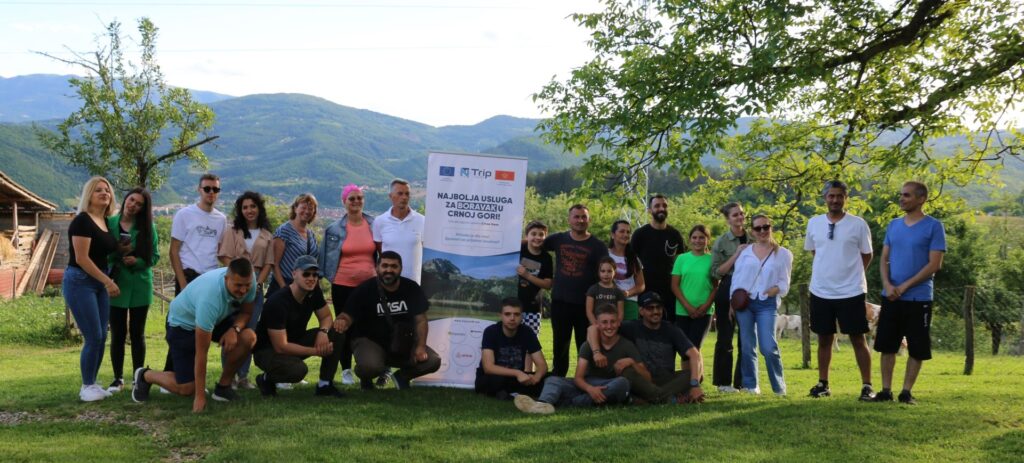
The project is implemented by Trip North DOO – Rožaje. It doesn’t only cover the training and promotion of rural households in the northern part of Montenegro, but it is also involved in developing new tourist products, like a jeep tour through the Bjelasica mountains with a visit of five glacial lakes and horse riding at Džafića Brdo in Bijelo Polje.
It was a nice experience to explore the green mountains around Bijelo Polje on horse back. The ride was organized by Suad Hot and his family, who have been horse owners for several generations.

But I was really curious to join the planned jeep tour and discover the lakes of Bjelasica. Except for Lake Biograd, the Bjelasica mountains and Biogradska Gora National Park were still quite unknown to me, although the region has the advantage of being easily accessible.
Bjelasica is a mountain range that is characterized by gentle peaks and grasslands, while the slopes are covered by deep forests. It is the greenest mountain massif of Montenegro, and very rich in water. Its volcanic origins have created smooth round shapes and spacious, mildly rolling landscapes, which means that it is quite different from Mount Durmitor with its steep and rocky summits! But the special treasure of Bjelasica are the glacial lakes, looking like some small mirrors scattered across the mountains. Without them, the landscapes would not be so breath-taking and mystical!
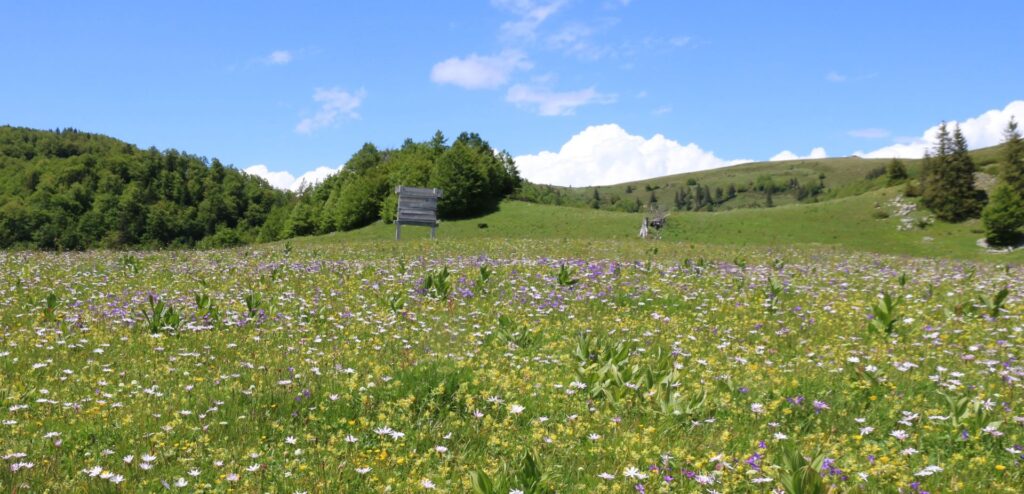
Bjelasica covers an area of 630 km2, of which Biogradska Gora National Park has a surface of 54 km2. The Park is surrounded by 10 peaks above 2,000 m and is the smallest National Park of Montenegro.
Here you can find a primeval forest, one of the three remaining in Europe. The forest is home to trees over 40 meters tall and up to 500 years old. This area has been protected since 1878, when Montenegro’s King Nikola declared a „ban“ on using the forest for commercial purposes. It was called „Kraljev Zabran“ (eng. „King’s Ban“). In 1952 Biogradska Gora officially became a national park.
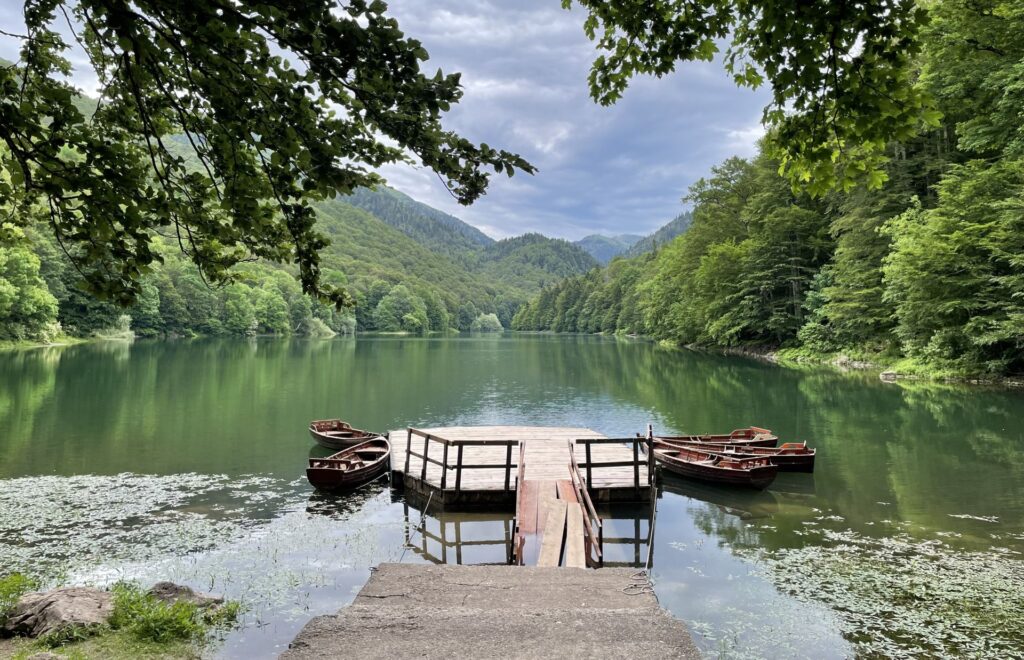
Our tour started with a walk around Biogradsko Jezero or Biogradsko Lake (entrance to the National Park € 5.00 p.p.). I agree, this is one of the most beautiful lakes of Montenegro, as it is located in the heart of the virgin rain forest at an altitude of 1,094 m above sea level. A 3.5 km long trail (around one hour) surrounds the lake, offering wonderful views of the emerald-green lake and the forests around it. Walking among the huge trees, we passed over wooden decks and romantic bridges on the spring of Biogradska Rijeka that feeds the lake.
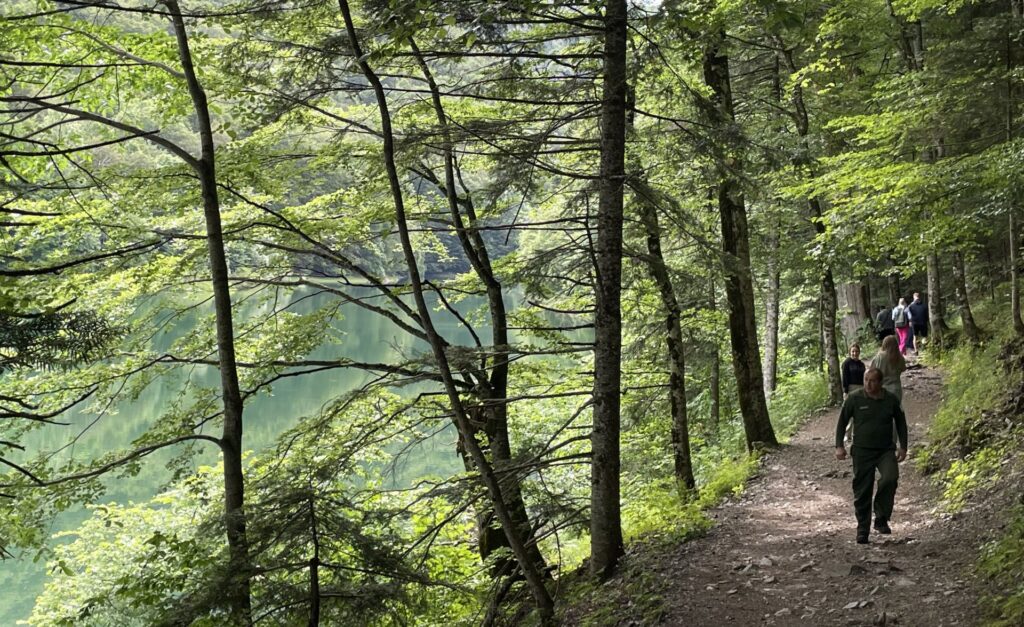
Along the trail, we found many information boards about the park and the flora and fauna that can be found here, but we also saw a lot of signposts for hikers and mountain bikers starting from the lake and leading to mountain peaks, lakes and „katuns“. One of such „katuns“ is Dolovi Lalevići, located above Biogradsko Jezero at an altitude of 1,685 m on a small plateau between two hills.
But let me explain what a „katun“ is: katuns are temporary settlements, scattered throughout the mountains all over the northern part of Montenegro. They consist of several small mountain huts or wooden cottages. Traditionally, rural farming families move to their simple alpine huts during the summer months, where they put their livestock out to pasture.
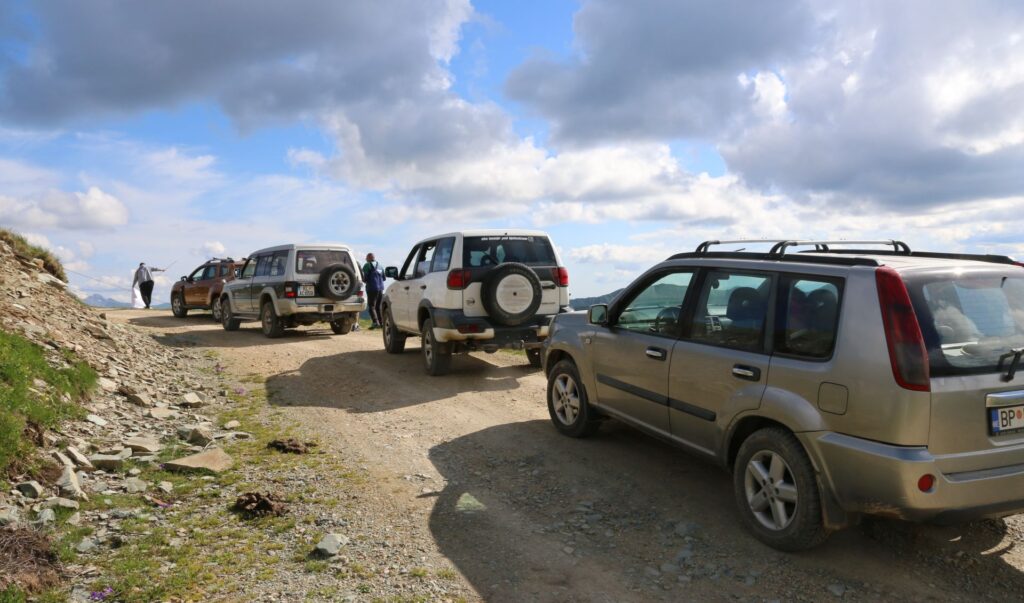
We left the Biogradsko Lake and continued our jeep tour, driving slowly on rather narrow and rough macadam roads and enjoying the wonderful landscapes. Finally we arrived at the picturesque Veliko Šiško Lake (see photo 1). We did not visit the much smaller Malo Šiško Lake, which is about one kilometer away. While we were walking around the lake, a large flock of sheep approached. It was as if we were watching a National Geographic film… Nice to know that there is a legend saying that these lakes got their name, because, in the old days, sheep from the nearby katuns were sheared (transl. „šišane“) here.
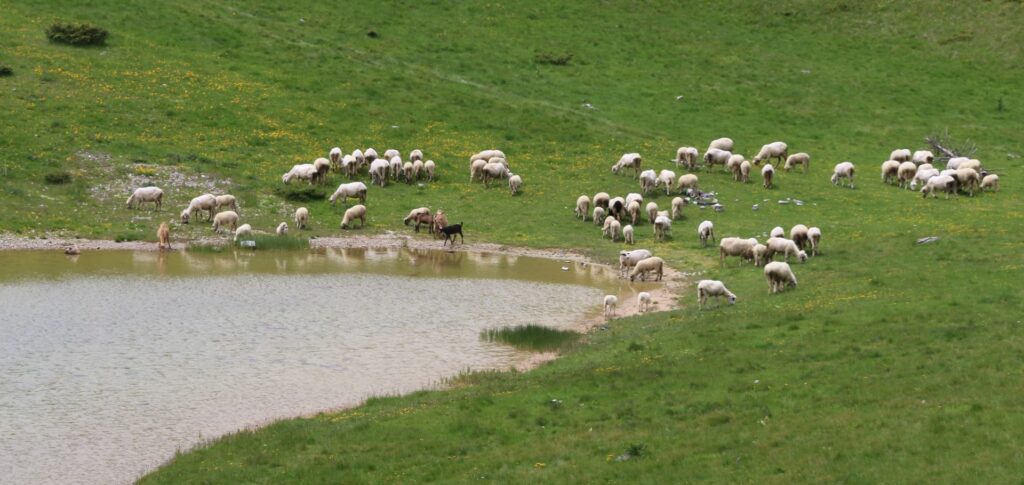
Veliko (large) Šiško Lake is of glacial origin – it collects the water from melting snow. It is situated at an altitude of 1,660 meters and it is surrounded by some nice katuns and a forest.
Lunch was offered at the Šiška Katun – the Dubak Family had prepared a real „slow food“ meal for us. This family also has a few nicely decorated rooms for tourists. Electricity is provided by solar panels, water comes from a mountain spring. By the way, for more information about village vacations, download the brochure „Rural Households in Montenegro“ from the internet.
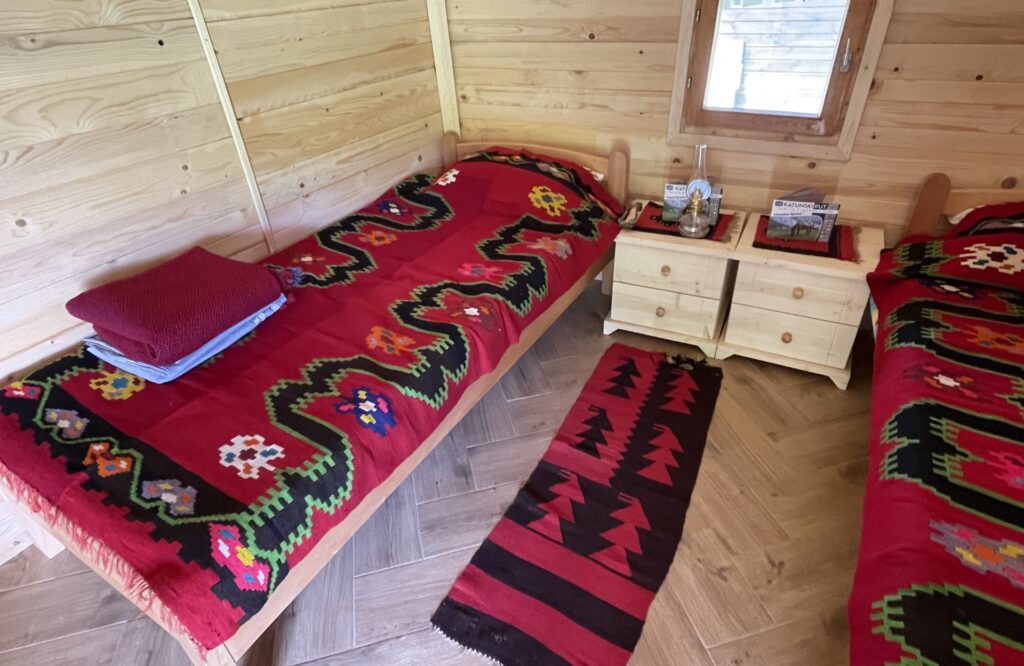
Our hosts succeeded in preparing a tasty and very abundant meal for the participants of the tour: first of all, „kačamak“, the traditional mountain food. Did you know that „kačamak“ is made by cooking up a porridge of flour and potatoes, finished off by „kaymak“ (clotted cream) and cheese? Yes, heavy food! It was usually eaten to provide energy to the villagers working hard in the mountains.
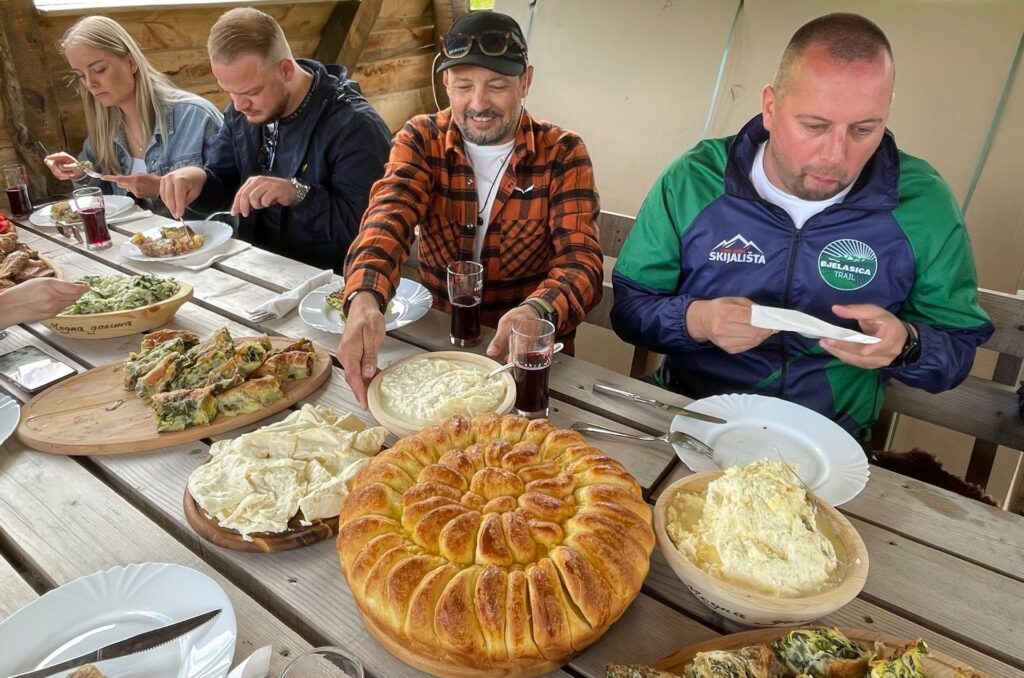
Other dishes put on the large table were cooked lamb, chard pie, cheese, kaymak, salad and a beautiful big home-made bread. And let’s not forget the sweet dessert and the delicious home-made blueberry and elderberry juice!
After lunch we decided to make a walk through the sunny pastures full of spring flowers and to continue to Ševarinsko Lake, a shallow lake surrounded by forests. Many mountain huts and cottages were scattered all over the plateau. It was clear that people had already started to take their sheep and cattle to the katun.
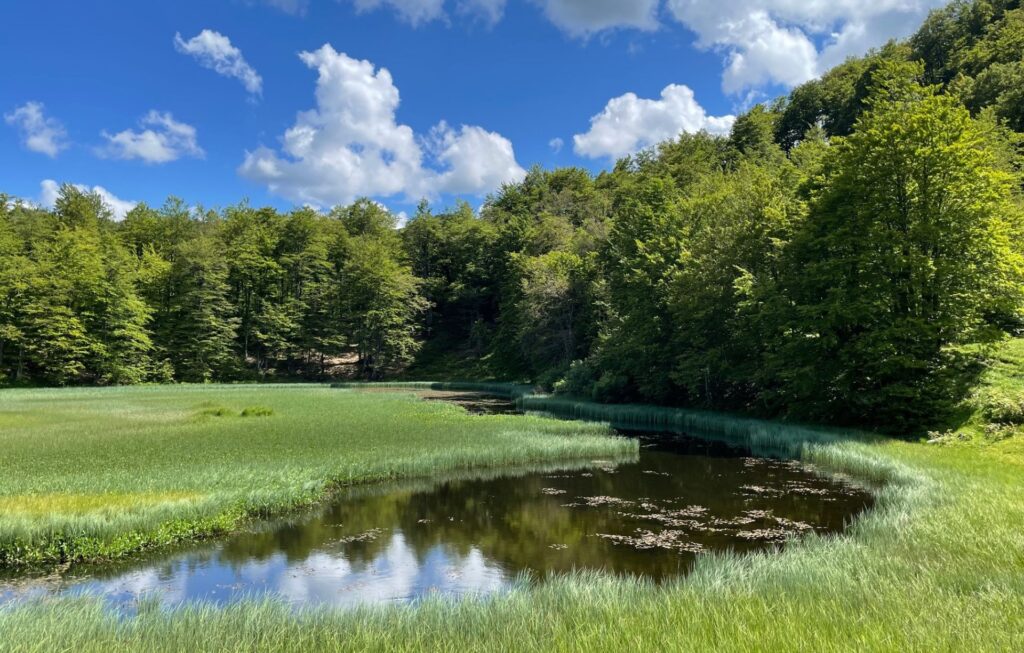
The last part of our trip was the jeep tour to the peak of Zekova Glava (2,117 m), where we had a breath-taking view of Pešića Lake from above and also of the Komovi mountains and Kolašin. The road was narrow and steep, we passed under the Bjelasica ski lift and continued to an altitude of 2065 m.

Pešića Lake is the second largest lake on Bjelasica and is situated at the altitude of 1,821 meters in the area between the highest peaks of Bjelasica: Crna Glava and Zekova Glava. There are numerous legends about this lake. One of them says that there was a winged horse that appeared only at night, and whose majestic appearance was enjoyed only by forest fairies could see him. If a man wanted to convince himself of the truth of this story, he would be punished. They say that this happened to a member of the Pešić family, who drowned in the lake at night.
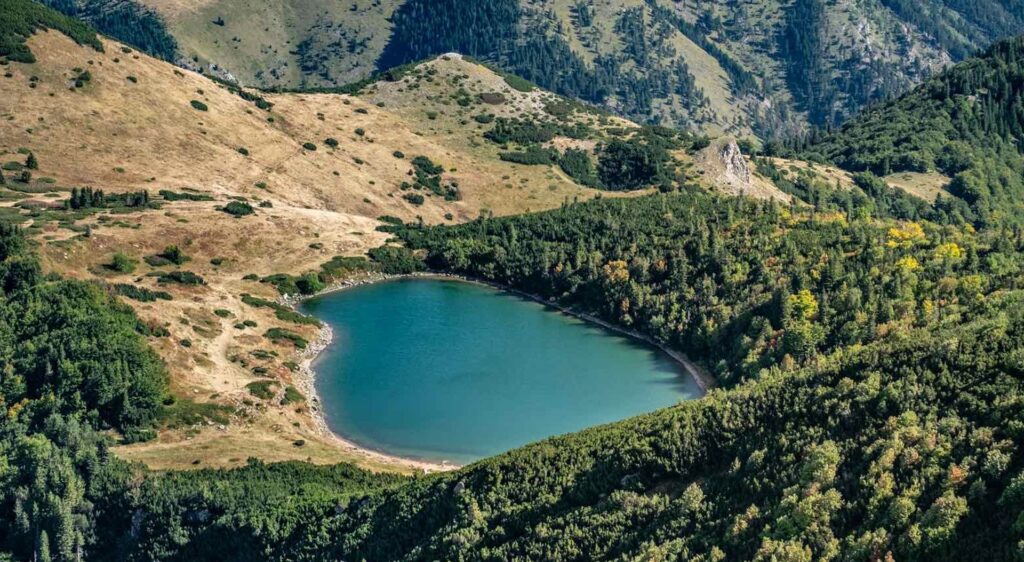
Not far from Pešića Lake, under Crna Glava, is Ursulovačko Lake, one of the most inaccessible lakes of Bjelasica. These two lakes can also be reached by a hiking tour from the direction of Katun Vranjak.
Black clouds were gathering above the mountains, making the mountain peaks even more impressive. It was time to finish our tour….
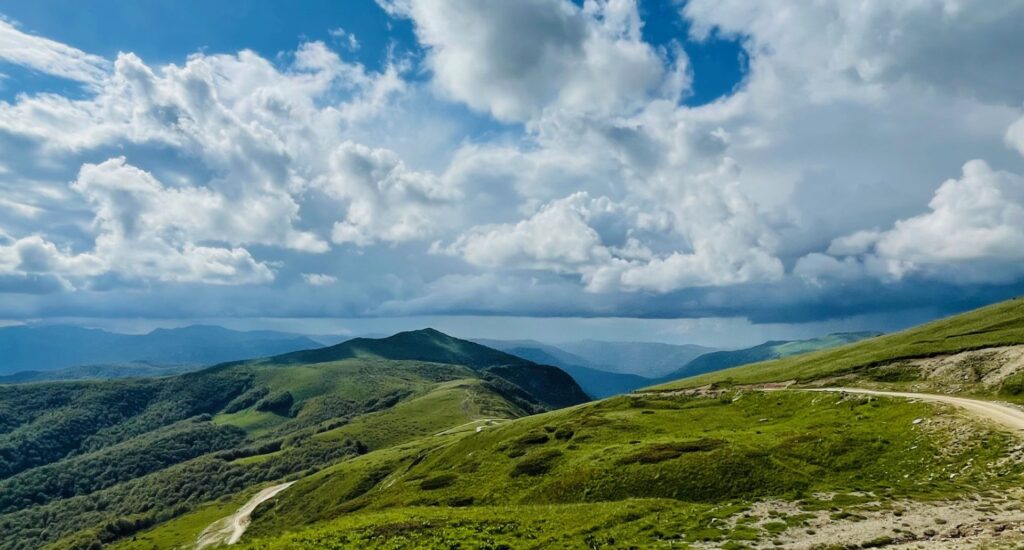
Finally, I can only conclude that Bjelasica is not only a perfect place for those who seek quiet and relaxing hiking destinations, the mountains offer much more: making a jeep tour to the glacial lakes, passing through green pastures and untouched virgin forests; having a traditional lunch or staying at one of the traditional katuns; making a challenging mountain biking tour …. everything is possible in this magnificent region.
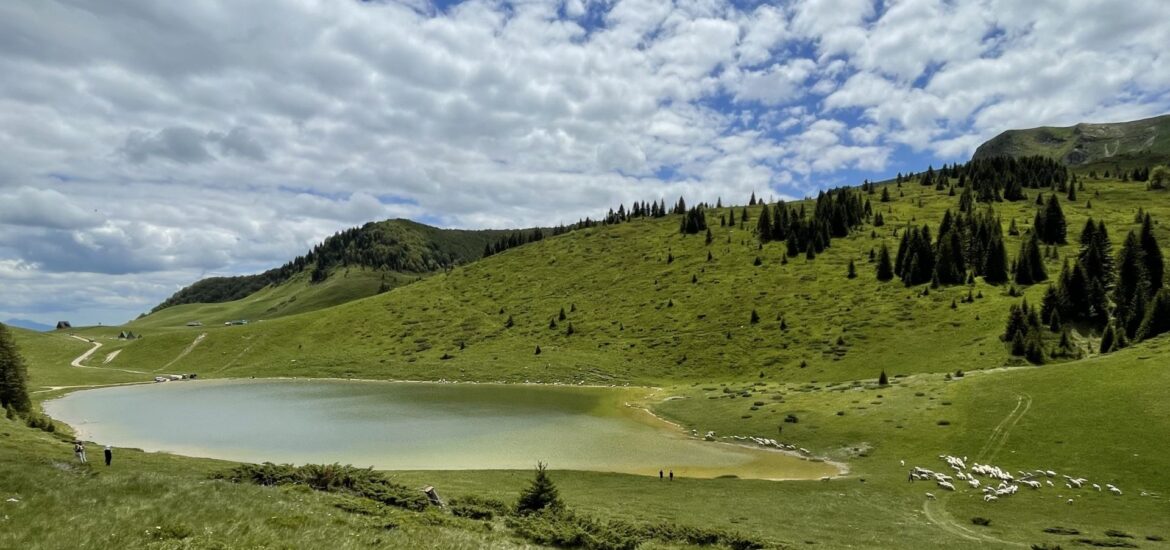
Once again a lovely story of the region!
Nice storm
Did a big part of this tour together with Mile Vuković some years ago.
It was great!